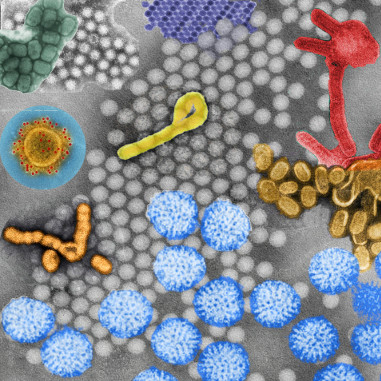Spring viraemia of Carp virus, goldfish (Carassius auratus), 2004, UK ex Italy, genogroup 1a (Asian), subgroup 1aii
Product Description
Ref-SKU:
021V-05935 Spring viremia of carp virus (SVCV), UK isolation G083, genogroup 1a, subgroup 1aii, live virus
Product Risk Group:
ICTV Taxonomy:
Virus name:
Genotype:
Storage conditions:
Viral Storage Medium -80C
Sequencing:
Complete coding sequence
Infectivity:
Infectivity tested and quantified
Mycoplasmic content:
Mycoplasma free
GMO:
No
Biosafety restrictions:
Pathogens of fish, molluscs and crustacea are not covered by the Specified Animals Pathogens Order (SAPO) or UK Health and Safety executive (HSE) Advisory Committee on Dangerous Pathogens. There are no known zoonotic viral pathogens of the aforementioned aquatic animals. However potential release of a WOAH or EU listed pathogen into the environment would be serious, potentially affecting wild and farmed animals and disease-free status for certain diseases. Work with these viruses must be undertaken in a BSL 2 compliant facility at the minimum, with appropriate inactivation and disposal for all waste streams including from laboratory and aquaria based experimental facilities.
Virus host type:
Previous Name or Taxonomy:
Infectivity Test:
TCID 50
Production cell line:
Genbank reference:
Virus Cultivability:
Passage:
P3
Identification technique:
ELISA and RT-PCR and sequencing
Shipping conditions:
IATA Classification:
Note:
Partial sequence information for the P gene and G gene can be found at accessions DQ916048 and AM501521 respectively
Information about the collection of the virus
Recombinant product:
No
Biological material origin:
Natural origin
Collection date:
Tuesday, 23 March, 2004
Country of collection:
Suspected epidemiological origin :
Isolation host:
Isolation technique:
Inoculation onto cell culture
Isolation conditions:
20 degrees C
Clinical information:
Asymptomatic
